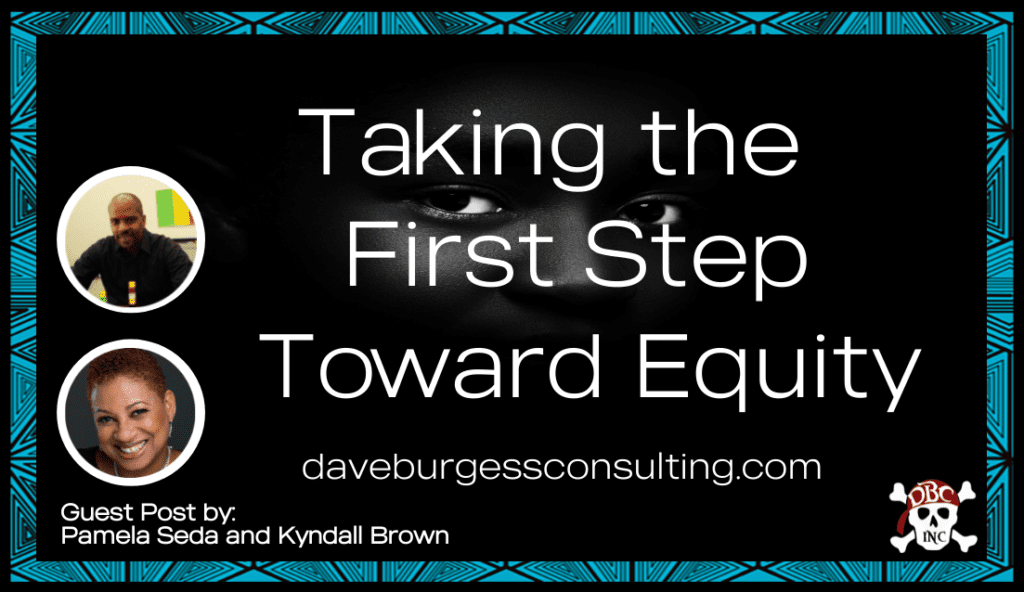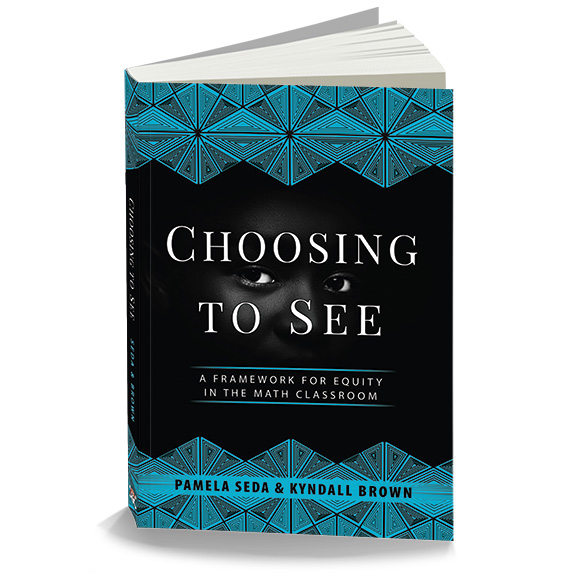This guest blog is brought to you by Pamela Seda and Kyndall Brown!
Pam and Kyndall have poured their heart into an incredible DBC, Inc. book titled Choosing to See: A Framework for Equity in the Math Classroom!
Pamela is a wife, mother of four adult children, a math educator with over 30 years of experience, and has a master's degree and Ph.D. in mathematics education from Georgia State University. She is currently a mathematics curriculum coordinator.
Kyndall Brown has over 35 years of experience in mathematics education, was a secondary mathematics teacher in the Los Angeles Unified School District for 13 years, has master's degrees in computer-based education and mathematics education, and a Ph.D. from UCLA's Graduate School of Education and Information Studies. He is currently the executive director of the California Mathematics Project.
And, we are proud to have them as a part of the DBC, Inc. family!
Take it away, friends!
Guest Post:
Equity is focused on making sure all students receive the support they need to be successful. Negative stereotypes about students from marginalized groups create roadblocks to that success. In order to improve outcomes for marginalized students, teachers need to look beyond stereotypes and get to know who their students are as people and what their academic strengths and weaknesses are. We believe being critically conscious is the first step towards equity. Being critically conscious means taking time to understand how negative stereotypes impact diverse learners and actively working to erase the effects of these stereotypes on the educational costumes of marginalized students. It is choosing to see your students in their humanity and the inequity that dehumanizes them and caring enough about what you see to act.
Implementing instructional strategies without attending to the impact of negative stereotypes on marginalized students will not improve academic outcomes for them. Without an intentional and deliberate focus on equity and access, even well-meaning educators will perpetuate inequitable practices that have resulted in the current achievement gaps. There are many reasons teachers choose not to truly see their students in all of their humanity and to ignore how prevalent inequity is in our educational system. Like we did early in our teaching careers, many teachers find it easier not to see than to acknowledge their own failures as educators. It was easier for us to see students’ lack of motivation, their failure to turn in assignments, their refusal to follow instructions, and their lack of parental support.
Because mathematics has the power to shatter students’ dreams in a number of ways, our failure to mathematically educate most students in general, and students of color in particular, is bad not only for these students individually, but also for our society. Being critically conscious is at the heart of the ICUCARE equity framework. Embracing the ICUCARE equity framework means recognizing negative stereotypes about marginalized students and understanding their effects. It means accepting that every one of your students can be an expert given the opportunity. It means knowing that your students have rich lives outside of the classroom that can inform what you do inside the classroom. It means embracing that doers of mathematics come in all ethnicities, genders, and races. It means appreciating the wealth of knowledge that students bring with them to any given topic. It means viewing your students as co-laborers in the process of teaching and learning. And it means valuing students in terms of their strengths, capabilities, and talents. Please join us in our journey to become more equitable math educators by reading our newly released book, Choosing to See: A Framework for Equity in the Math Classroom.
-Pam & Kyndall
Thank You, Pam & Kyndall!
Wow! Thanks for the incredible post!!
Friends, if you haven't already, be sure to follow Pamela Seda and Kyndall Brown on Twitter by clicking the links in their names. Also, check out their book Choosing to See: A Framework for Equity in the Math Classroom! It's INCREDIBLE with raving reviews!
Most of the top jobs for the future require students to have a strong foundational understanding of mathematics. Our failure to mathematically educate most students in general, and students of color in particular, is bad not only for these students individually but also for our society. In Choosing to See, Pamela Seda and Kyndall Brown offer a substantive, rigorous, and necessary set of interventions to move mathematics education toward greater equity, particularly in serving the needs of
Black and Brown students, who are underrepresented and underserved as math scholars. The authors’ thoughtful ICUCARE equity framework serves as a lens to help teachers see where they are achieving this alignment and where they are not. Through this lens, choosing to see means caring enough about what you see to act. It means accepting that every one of your students can be an expert given the opportunity. It means recognizing negative stereotypes about marginalized students and understanding their effects. It means knowing that your students have rich lives outside the classroom that can inform what you do inside the classroom. And it
means recognizing and celebrating their human dimensions, so that all students’ strengths, capabilities, and talents can grow.





